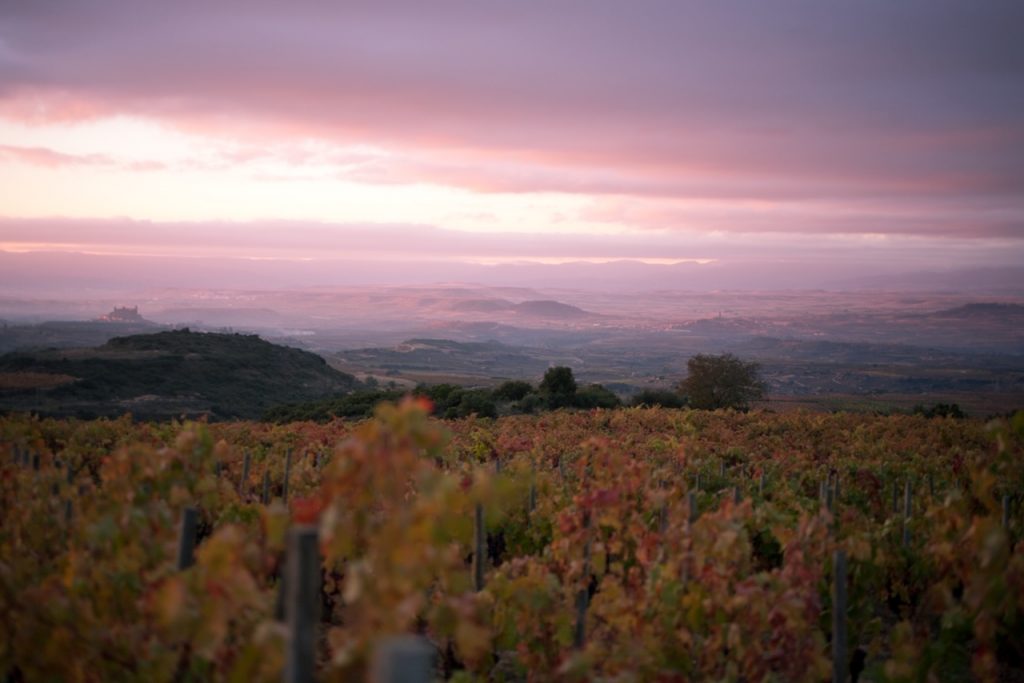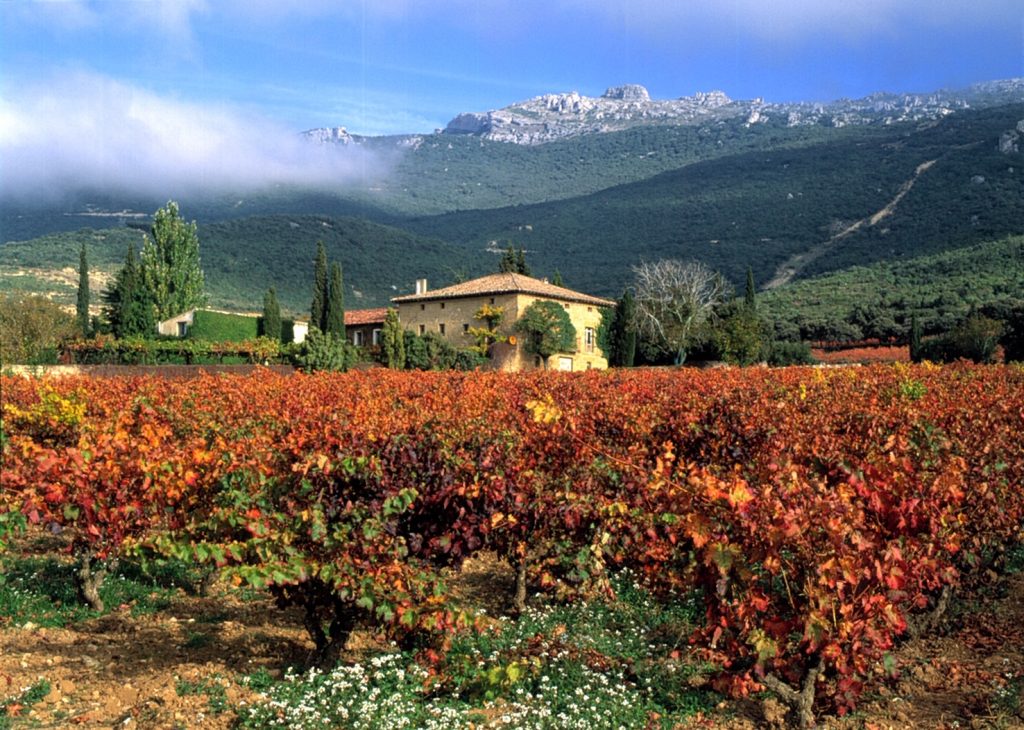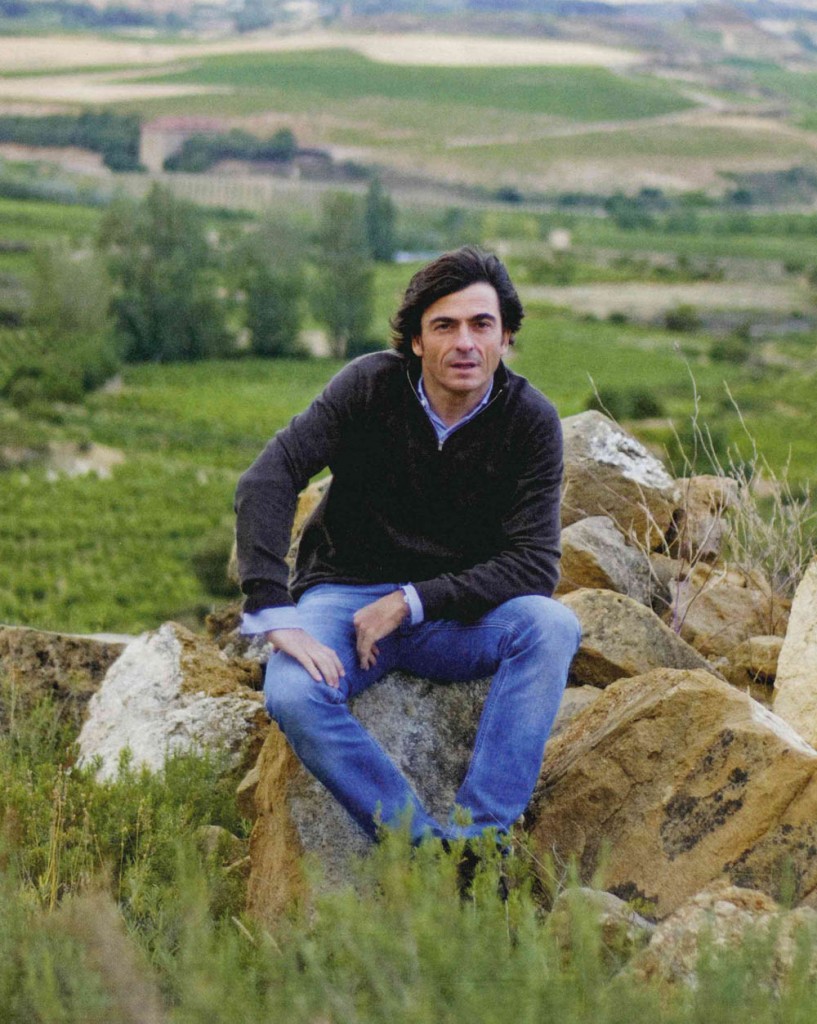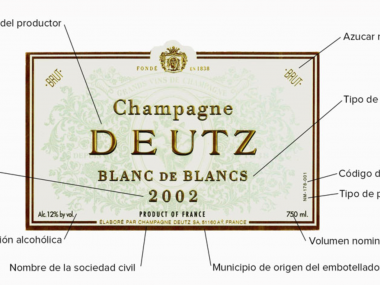Less is more. This is what Bodegas Remelluri believes. In a dialogue with Gourmet Hunters, their commercial manager Rafa Soto Mahamud tells us why they aim to limit production to 250,000 bottles a year, to avoid falling into an industrial model, and to carry out ecological viticulture. The result: Wines with a lot of texture and nuances, which can reflect that Rioja of yesteryear, which Bodegas Remelluri is determined to recover.
How would you define Bodegas Remelluri?
As a proposal to return to a Rioja prior to that of the great wineries that were born at the end of the 19th century with a further vocation to produce large quantities, to mix different plots of land and to homogenize them in order to give a taste that is always highly conditioned by maturation in barrels. We seek to react to this in some way to give a different vision. Remelluri itself is an estate of 91 hectares in which all the wines we produce, that is, what would be the range of Remelluri, Remelluri Reserva, Granja and Blanco, are made only with grapes from our estate. We do not buy grapes from any supplier. So, that already determines that the wines are going to be different, year after year, because logically when not being able to buy, they are going to be a much more faithful expression not only of the terroir but also of each year, which sometimes can be not so commercial, because it is not always the same flavor, but for us it is much more interesting.
Why do you opt for organic cultivation?
Since Telmo Rodríguez returned, one of our priorities has been to work in organic farming, which for us fundamentally means respect for the life of our soils. We have various crops in different plots with the aim of giving life to the soil, in some cases to take away the vigour of the vine, and sometimes with health objectives, for example, for pest control. The aim is to work on the recovery of the old style. Our wines are certified as organic. In the case of Lindes, it is more focused on the villages. We cannot work ecologically there because there are several suppliers, some of whom we have known since the project began in 71′. Each one has its own practices, although we try to make them as similar as possible to our way of seeing viticulture and wine.
What characterizes the process of elaboration of your wines?
The fact that each small plot of land that forms part of Remelluri is produced separately is very important. And also, a little as a reaction to other large Rioja wineries that tend to homogenize, to mix in large tanks, either wood or stainless steel, or even concrete, in our case we try that each of the foudres, are the expression of a single estate. On the other hand, it is also important to emphasize not only the elaboration but also what comes from the vineyard from the co-plantation. In La Rioja, as in other parts of Spain, the fact that there are several types of grapes, several varieties, on the same estate, has been forgotten. We have gone back to that co-planting, to the point where it is very rare to have a single variety. At the same time, we always try to respect both the soil and the fruit, that is to say, we do not focus on our wines having a marked barrel character with a more oxidative profile, but on having a freshness and an important expression of fruit and soil.

What characteristics do the weather and geographical conditions bring to your wines?
We are located in the back of the Sierra del Toloño, with some estates exceeding 600 meters in altitude. So, that height and that geographical situation, being at this vertex of the Rioja Alavesa so determined by the Ebro River, means that we have that dual character, of Atlantic and Mediterranean at the same time. In Remelluri there is a lot of Atlantic vegetation, such as ferns, but at the same time there is also a lot of Mediterranean vegetation, such as lavender, thyme and heather. So, for us the climate is very determining, because we have sometimes severe winters, with snow, but then we have very pleasant autumns, quite rainy. The summers are warm and we have a very big difference in temperature between night and day, which means that the maturation is quite long in time. And our harvests are quite long.
What changes have you experienced over the years?
Remelluri was born in 71′ in the hands of Telmo, Amaia and Sancho’s parents, who had a rather romantic idea of recovering a farm. They bought a farm with a monastery that dates back to the 13th century. It is a property where wine has been produced since almost the late Middle Ages. They had the idea of doing something very discreet, very integrated with nature, bringing together the industrial models of La Rioja. With the arrival of Telmo at the end of the 90s, they innovated with white wine, which is a very original proposal. With the new phase of Telmo in the mid 2000’s, the theme of ecology was incorporated, trying to purify Remelluri by making a quantity of around 200 or 250 thousand bottles every year and no more. What there is is what there is, we work with what is ours, separating both Lindes from what would be Remelluri.
How do you position yourself in the national and international market?
Nowadays, for us the national market is much more important than the export market. We are still a well-known brand in Spain, and even the majority of our sales, I would say no less than 70 percent, are at the national level.

Has this been evolving over time?
Ideally, every year we grow a little bit. The truth is that with the COVID-19 health crisis things have been changing. We were selling very well in the North American market, in the Swiss market, in England. But now we don’t really know what the future is going to look like. However, our idea is, always taking care to maintain a constant quantity and without seeking to grow in volume, that there will be less and less wine on the domestic market. But, in this context, the reality is that it is impossible to make real business plans.
What is the most important value of your wines?
I believe that the value is to offer a different view of La Rioja, which I believe is one of the most interesting wine regions in the world, a view that has practically been forgotten, and I think it is the most beautiful thing we have. That look with its focus on the villages, that look fixed on the elaboration of a single estate that we know well and where this wine has been made for many centuries. That ability to be brave and offer a vision of each vintage. There will be better or worse vintages. But well, we try not to homogenize and give a more authentic vision. The commitment not to grow, which involves many sacrifices, but we also think that it is the most honest thing towards our customers.
And what can we expect from their aroma and flavour profiles?
The first thing that is going to surprise people when, for example, they drink a Remelluri Reserva, is that they are going to find a wine with a lot of color and layer, they are going to think that it is not that it is not a Reserva. Then the nose will always be more complex and different. It also depends on the type of reserve. I think it is a nose that has a lot of bush, cherry, sage, hawthorn. And then also of black fruit. And some very subtle touches of bakery, of pastry. Nothing woodsy. And then in the mouth I like it because it has texture. It has tannins. We like wines that have something to say in the mouth. That’s what we really like most. That it has different textures, that it has present but mature tannins. That would be a bit distinctive, some very textured tannins, a complex nose and not only on the basis of the ageing, the time spent in the barrel, the maturation, but also with other nuances from our landscape.







